Insight:
- Durian offers significant potential to boost Vietnam’s agricultural exports.
- China stands as the foremost importer of durian in the global market.
Durian is a type of fruit that originates from Southeast Asia and is mostly cultivated in Thailand, Malaysia, Indonesia, the Philippines, and Vietnam. It is often referred to as the “king of fruits” and has a very distinctive flavor.
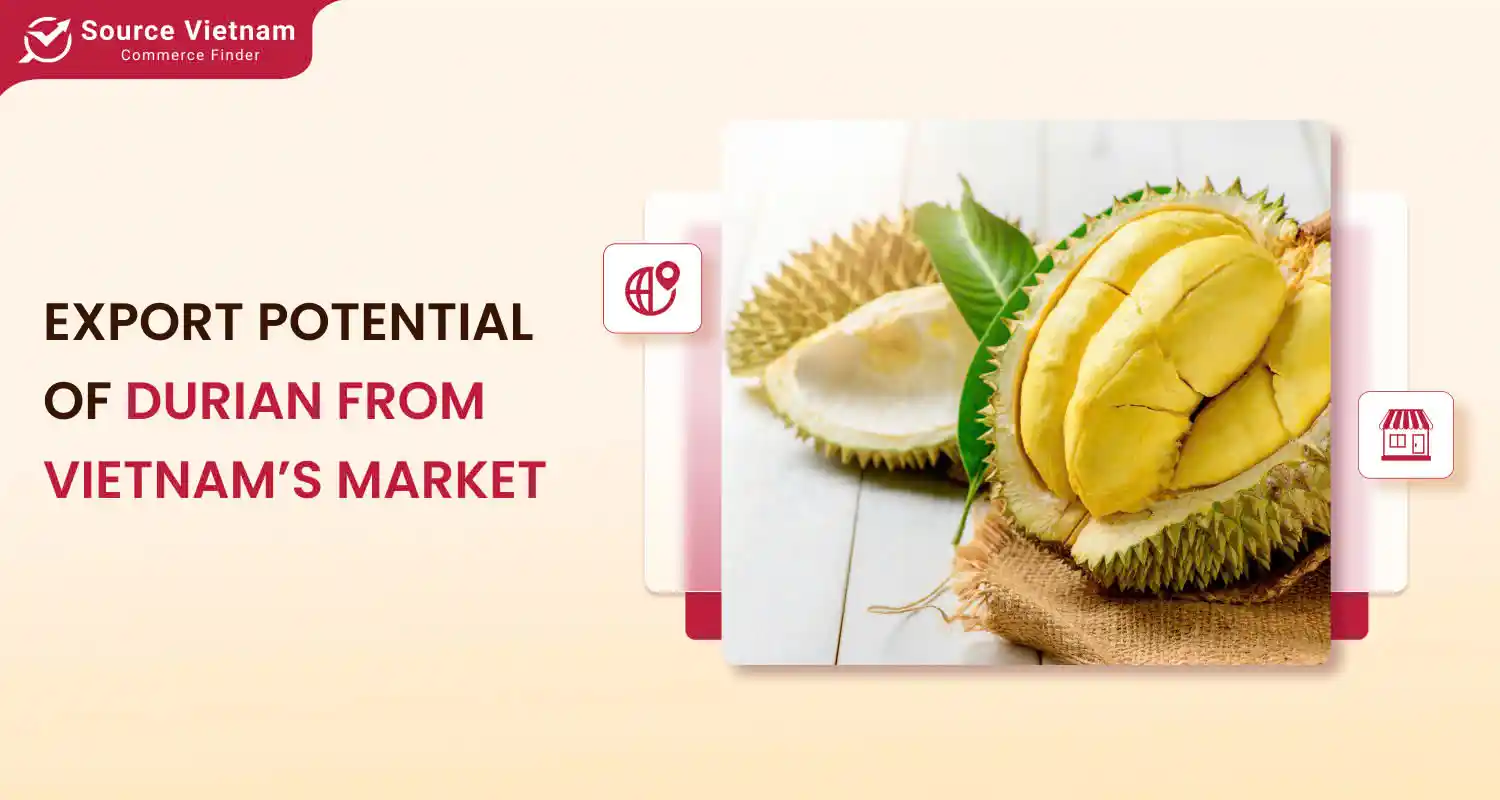
The economic potential of Vietnamese durian
According to a report by Vietnam’s Crop Production Department, the durian cultivation area in Vietnam was 84,800 hectares in 2021. However, by 2023, this area increased to over 110,000 hectares, with a production volume exceeding 1,000,000 tons, marking a 30% growth compared to 2021.
The primary cultivation regions include Tien Giang, Vinh Long, Dong Nai, Dak Lak, Gia Lai, Dak Nong, and Lam Dong, with a nearly year-round harvest season. The predominant durian varieties are Ri6, Dona, and a smaller quantity of 9 Hoa.
Meanwhile, the durian harvest seasons in Thailand, the Philippines, and other countries typically fall between April and September.
Currently, China, a neighboring country of Vietnam, is the world’s largest durian consumer market, with durian imports in 2023 reaching approximately 8 billion USD (7 billion USD for fresh durian and 1 billion USD for frozen durian), primarily sourced from Thailand, Vietnam, Malaysia, and the Philippines.
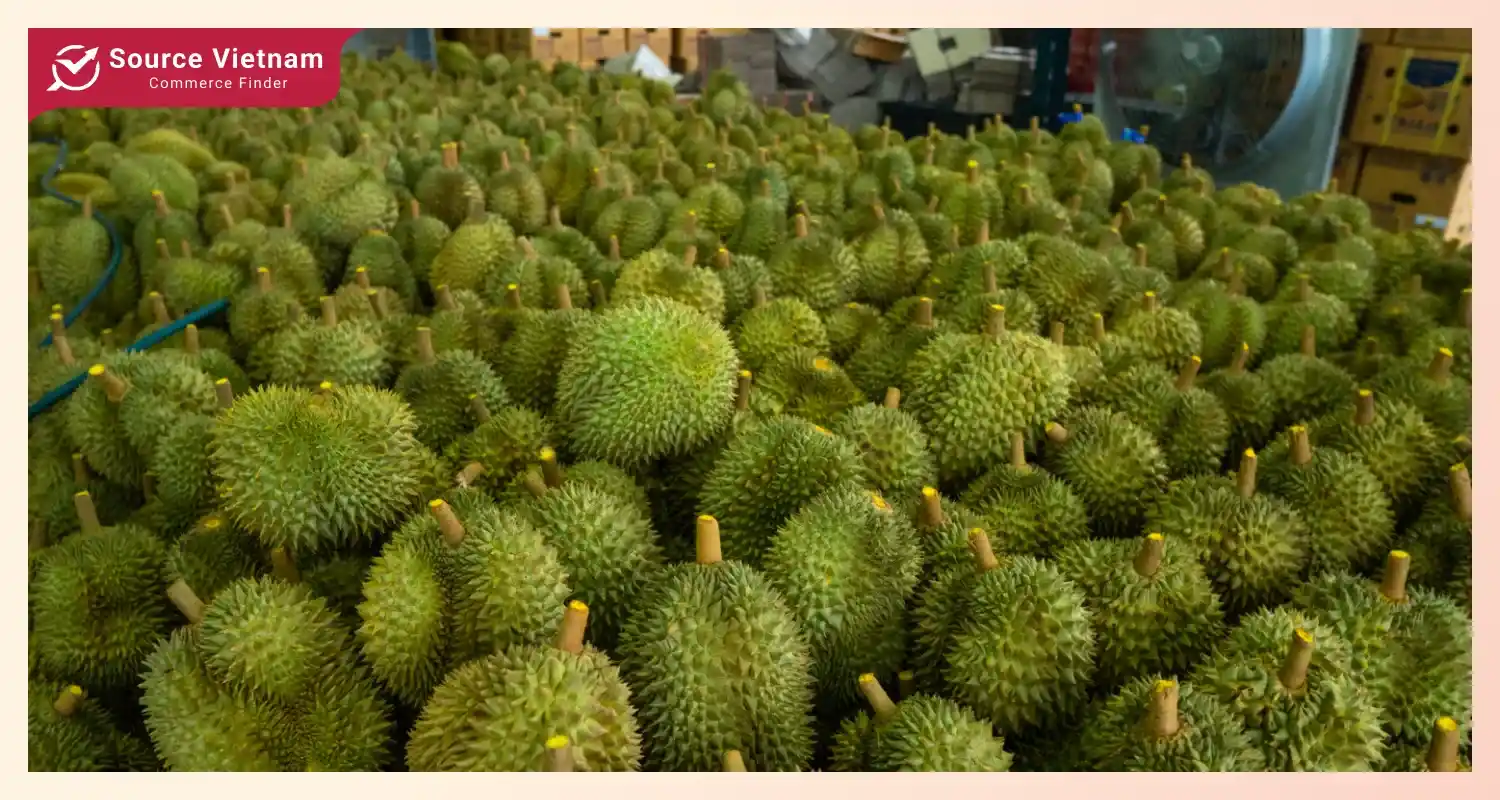
This is a very important advantage and opportunity for Vietnamese durian to develop rapidly because logistics costs will be cheaper and the time will be much shorter compared to other countries.
It takes less than 36 hours by road to reach the Chinese market, helping to reduce import costs and compete effectively with other countries (while Thailand takes nearly 10 days).
By July 2024, the export volume of durian reached a record of 280 million USD, up 82% compared to the same period last year, of which the Chinese market accounted for 92%.
According to the latest data from customs, vegetable and fruit exports in the first 7 months of the year reached nearly 4 billion USD, up 26% compared to the same period in 2023.
Durian led with a turnover of 1.6 billion USD, up 50%, of which the Chinese market accounted for 92% with nearly 1.5 billion USD. The Ministry of Agriculture and Rural Development forecasts that durian exports this year will reach 3-3.5 billion USD, with frozen durian accounting for about 400-500 million USD.
Frozen durian exports have the potential to reach a value of 300 million US dollars
China is the world’s largest consumer of durian and is also one of Vietnam’s most promising markets. Sharing information at the conference on disseminating regulations for exporting frozen durian to the Chinese market on the morning of September 19th, Mr. Nguyen Quang Hieu, Deputy Director of the Plant Protection Department, said that: China is currently the number one potential market for exporting fresh durian and frozen durian from Vietnam.
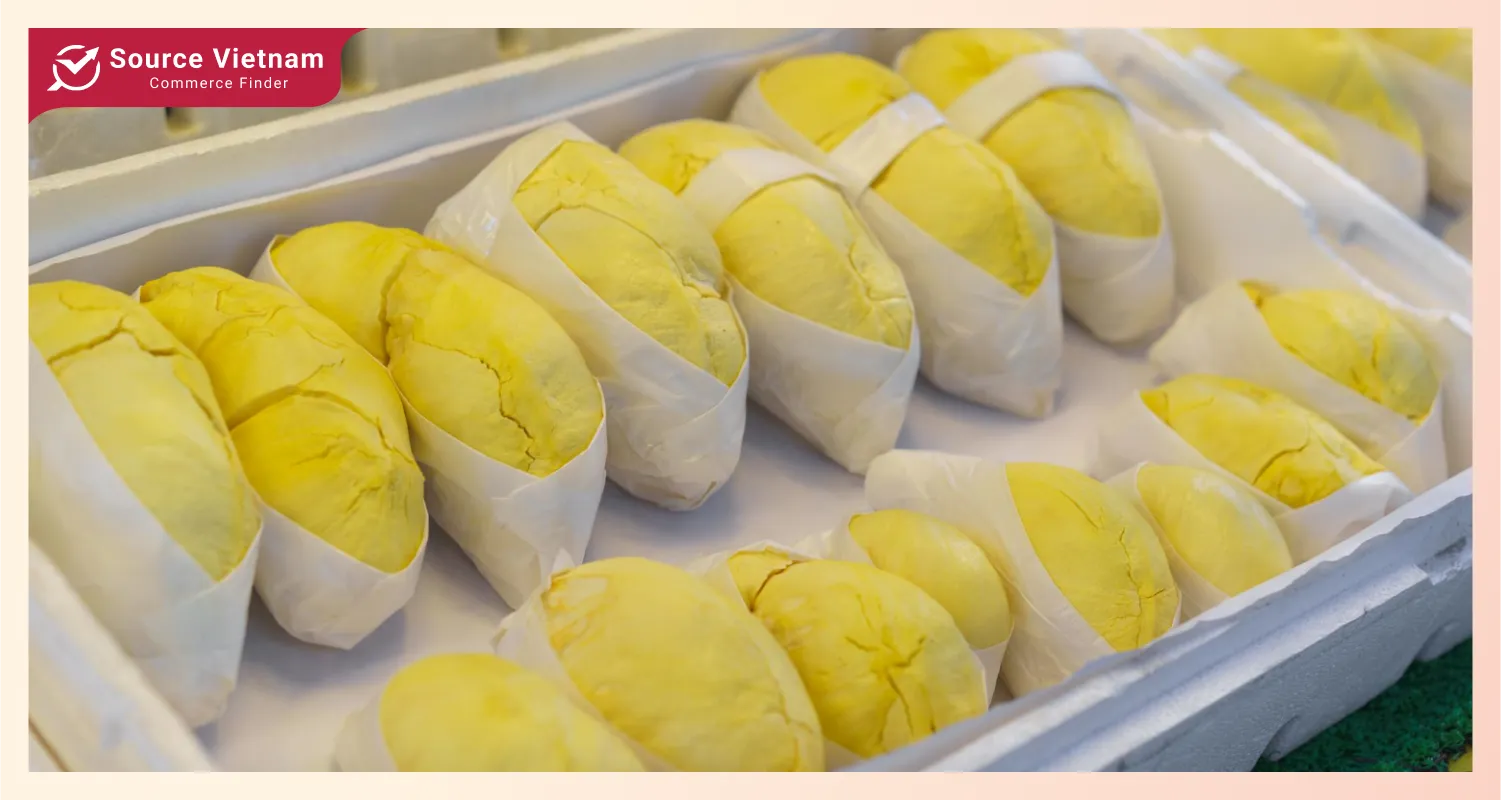
From August 2024, China officially opened its market to Vietnamese durian, through the signing of a protocol allowing frozen durian segments to be imported into the country.
This is a golden opportunity for durian, thereby helping the industry to increase its value and avoid risks when relying on the export of fresh products.
According to the Plant Protection Department, with the recently signed protocol, Vietnam’s frozen durian exports could reach $300 million in 2024 if businesses can complete the necessary registration procedures for export soon.
Additionally, it is estimated that China imports fresh durians worth $7 billion annually, and this figure is projected to surpass $10 billion in the next few years.
Đặng Phúc Nguyên, Secretary-General of the Vietnam Fruit and Vegetable Association (VINAFRUIT), stated that they aim to achieve $3.5 billion in durian revenue in 2024, a 55% increase compared to the previous year, by penetrating deeper into the Chinese market.
This, in turn, will contribute to raising the total export value of the fruit and vegetable industry to between $6 and $6.5 billion.
Explaining the reason for setting high targets in 2024, Mr. Nguyen informed that the Vietnamese and Chinese authorities have completed technical negotiations to sign a protocol on the export of frozen durian and fresh coconuts to China.
Once the protocol is finalized and signed, China will officially import frozen durian. This will significantly increase the export value of durian. A container of frozen durian exported to China will be worth many times more than exporting fresh fruit.
Opportunities and challenges from the export of frozen durian
Opportunities in durian export
Vietnamese durian is increasingly affirming its position in the international market. This is expected to be a product that brings many great opportunities for Vietnamese agriculture. Some prominent opportunities include:
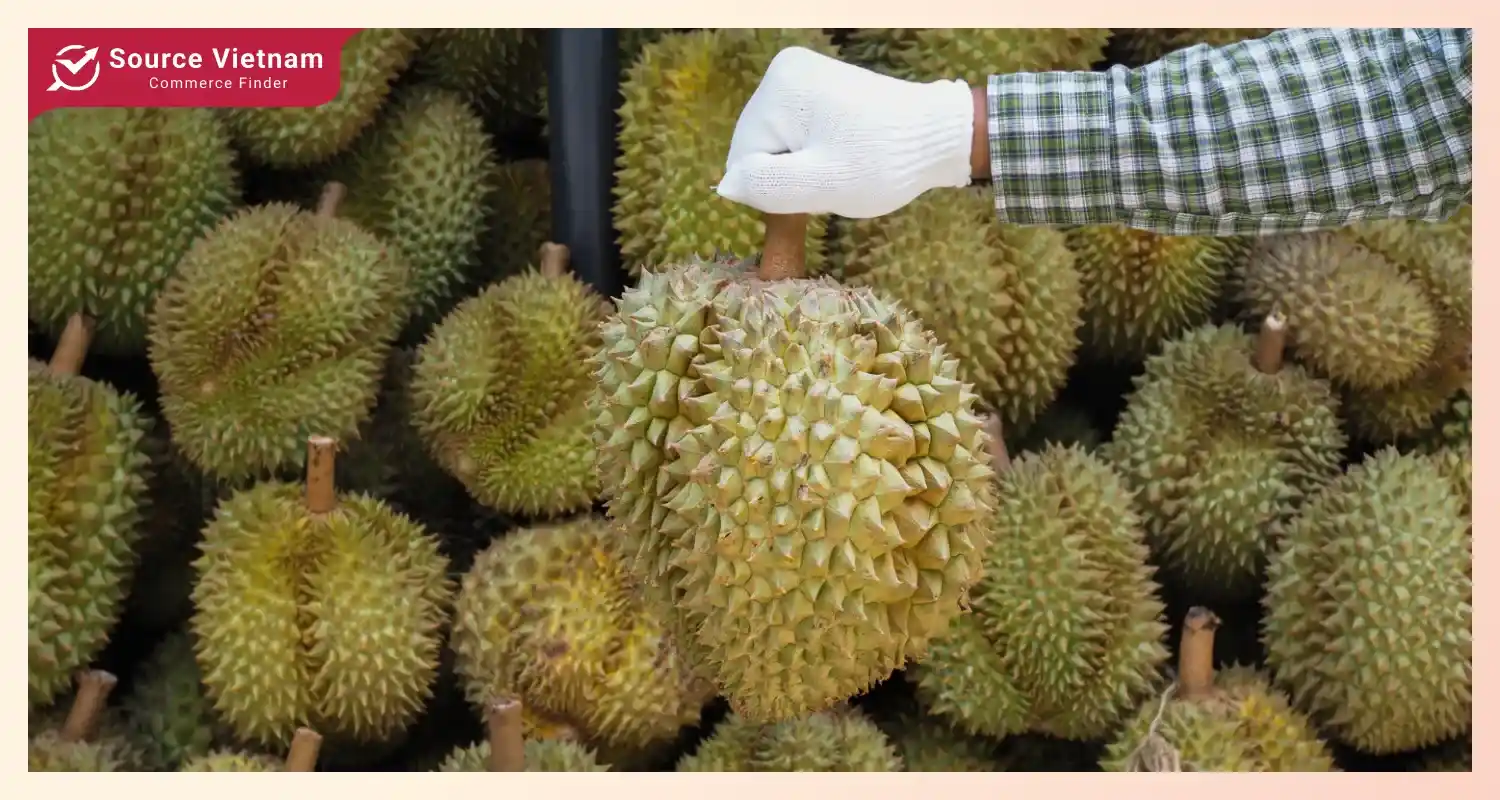
- Large and diverse market demand: In addition to China, the world’s largest consumer of durian, Asian countries such as Japan, Korea, and Singapore also have a high demand for tropical fruits. The European and American markets, although still relatively new, are gradually expanding and attracting the attention of many consumers.
- Advantages in quality and price: Vietnamese durian is highly valued for its delicious, distinctive flavor and quality, which has been continuously improved thanks to production processes and investments in modern machinery. Compared to other durian-producing countries, Vietnam’s production costs are relatively low, making the product highly competitive on the international market.
- Government support policies: Signed trade agreements have facilitated the export of durian to many markets. The government has also implemented many technical support policies to help farmers improve product quality and meet the food safety requirements of importing markets.
- Global consumption trends: Consumers are increasingly concerned about health and seeking natural, organic products. Durian, with many nutrients that are good for health, is an attractive choice. At the same time, consumers want to explore new and unique flavors. Durian, with its distinctive flavor, is an interesting choice to meet this demand.
- Opportunities for developing processed products: Products such as frozen durian, dried durian, durian seed products, and many other future products will have opportunities to develop as consumer demand continues to grow. This will contribute to promoting the volume and products from durian.
Challenges in durian production and export
Although this is a potential export product with promising opportunities ahead, Vietnamese durian still faces many difficulties.
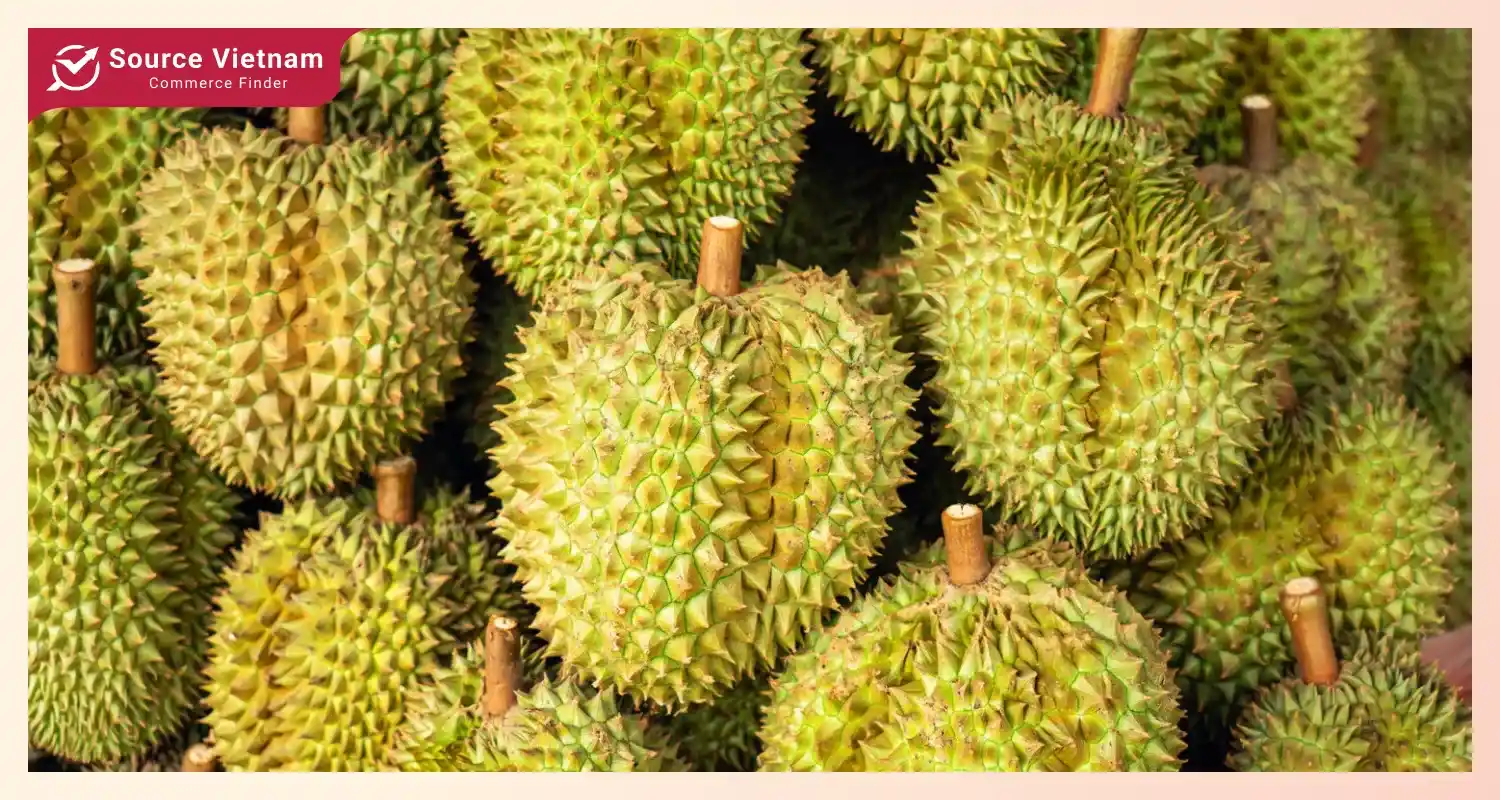
- Challenges in original regulations: As frozen durian is still considered a food product, it must comply with the regulations of the General Administration of Customs of China (GACC) regarding the management and registration of foreign enterprises. According to Chinese regulations, enterprises and organizations wishing to export must register and obtain approval from the Chinese side.
- Infrastructure investment: For frozen durian, enterprises must establish an effective food safety management system. Cold storage facilities must meet standards, and water and steam used in the production process must be guaranteed. Although the area of durian cultivation is large, the area that meets quality and legal standards for export is still very small. If the raw material areas want to meet export requirements, they must complete all these legal procedures.
- Increasing competition: China has successfully researched and grown commercial durian on an increasing scale. In the context of increasing competition, Vietnam needs sustainable development strategies for this billion-dollar commodity to improve the quality and brand of Vietnamese durian.
- Natural conditions: Natural disasters and floods are reducing supply, pushing up raw material prices, while export prices are not easy to adjust. In addition, the supply of raw materials that meet export standards, have growing area codes, and can be traced is severely lacking in many localities.
Conclusion
Vietnamese durian has huge potential to become a global fruit sensation, thanks to the international market and the hard work of our businesses. But to make this happen, everyone needs to work together: the government, businesses, and the people. Stay tuned to our blog for the latest updates.







